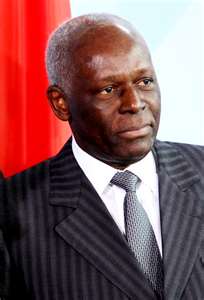19th August, 2016

The WHO is carrying out one of the largest emergency vaccination campaigns ever attempted in Africa in Angola and the DRC in conjunction with other partners in a bid to arrest the outbreak of the disease that has killed more than 400 people and sickened thousands more.
Working with Ministries of Health in the two countries, WHO is coordinating 56 global partners to vaccinate more than 14 million people against yellow fever in more than 8,000 locations. The yellow fever outbreak has found its way to dense, urban areas and hard-to-reach border regions, making planning for the vaccination campaign especially complex.
A release from WHO said emergency yellow fever vaccination campaigns have already reached more than 13 million people in Angola and more than 3 million in DRC, saying that the campaigns have been crucial to stopping the spread of the outbreak.
“Some areas are still considered at high risk and so preventive vaccination campaigns are planned for the capital city of Kinshasa in Democratic Republic of the Congo and along the country’s border with Angola, which spans 2646 km. The preventive vaccination campaign aims to build protection in the population perceived to be at high risk of getting infected and prevent potential spread and expansion of the current outbreak.
“Kinshasa has more than 10 million people, with only 2 million already vaccinated against yellow fever. With local transmission of the virus and low immunity in the population, there is a potential risk that the deadly outbreak could spread to other urban areas.
“With limited supplies of the vaccine, and a 6-month minimum manufacturing process, WHO has been working with the Ministries of Health to plan the mass vaccination campaign that uses one-fifth of the standard vaccine dose as a short-term emergency measure to reach as many people as possible.
“This method, known as fractional dosing, was recommended by WHO’s Strategic Advisory Group of Experts on Immunization (SAGE), after it reviewed existing evidence that demonstrated lower doses would protect people safely and effectively against the disease for at least 12 months, and likely much longer. The fractional dose will not entitle people to travel internationally, but it will protect them from yellow fever during this outbreak and will help stop it from spreading further.
″Protecting as many people as possible, is at the heart of this strategy. With a limited supply we need to use these vaccines very carefully,” says William Perea, Coordinator for the Control of Epidemic Diseases Unit at WHO.
WHO and partners including Médecins sans Frontières (MSF), International Federation of the Red Cross (IFRC) and UNICEF have been working closely together through the complex planning and logistics needed for the campaign.
Gavi, the Vaccine Alliance, has already enabled these countries to access to almost 19 million doses of the vaccine since January and is providing strong support to the upcoming campaigns as well. Other partners providing expertise and support include Save the Children and the United States Centers for Disease Control (CDC).
“Usually, planning a mass vaccination campaign can take anywhere between 3 to 6 months. This emergency campaign, however, must take place as soon as possible to end transmission before the rainy season starts in September. In order to vaccinate roughly 8 million people in Kinshasa within a short period, each team will need to vaccinate hundreds of people per day,” says Perea.
Approximately 17.3 million syringes and 41 000 health workers and volunteers are needed for the campaign. More than 500 vehicles will be used to transport the teams and supplies, which will be dispersed across more than 8000 vaccination sites in Kinshasa and along the Angola-Democratic Republic of the Congo border.
The fractional dose campaign in Kinshasa hinged on the availability of vaccines donated by the Brazilian government and manufactured by The Immunobiological Technology Institute (Bio-Manguinhos).
The campaign also required the purchase and shipment of 10 million specialized 0.1ml syringes, to ensure the right amount is used for every vaccination.
“The quantity of the syringes needed was not available on the open market, so we made a special order to manufacture these syringes,” says Guillaume Queyras, responsible for Operations Support and Logistics at WHO. “Supply of the syringes usually takes more than 2 months. Given this emergency situation, manufacturers worked with us to speed up production and deliver the syringes on time in the country”.
The 17.3 million vaccine syringes – equivalent to 700 cubic metres or 17 40-foot shipping containers – were air freighted to Democratic Republic of the Congo. After the vaccines and syringes arrived in the country, the freight had to be cleared through customs, a procedure that normally takes weeks. WHO worked closely with the Government of Democratic Republic of the Congo to fast-track this process.


